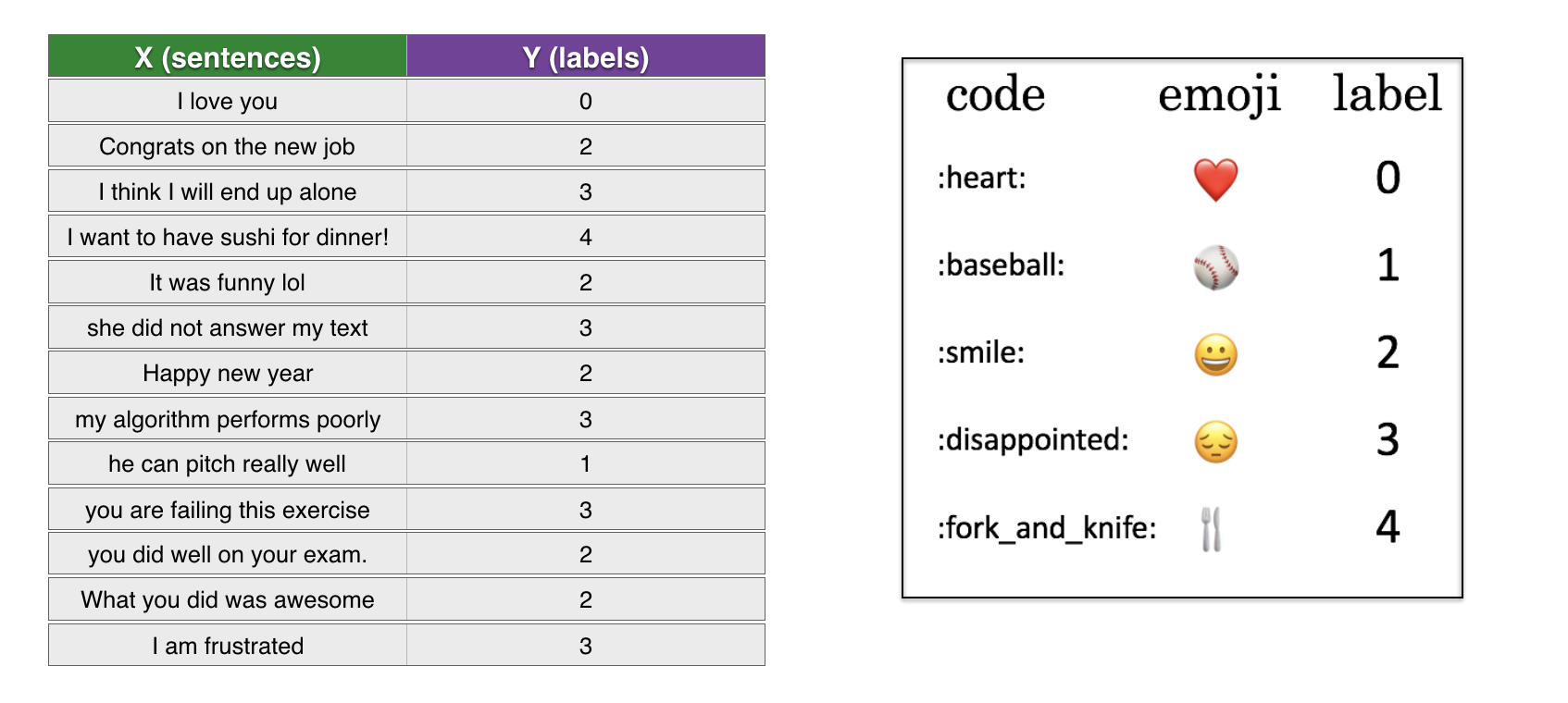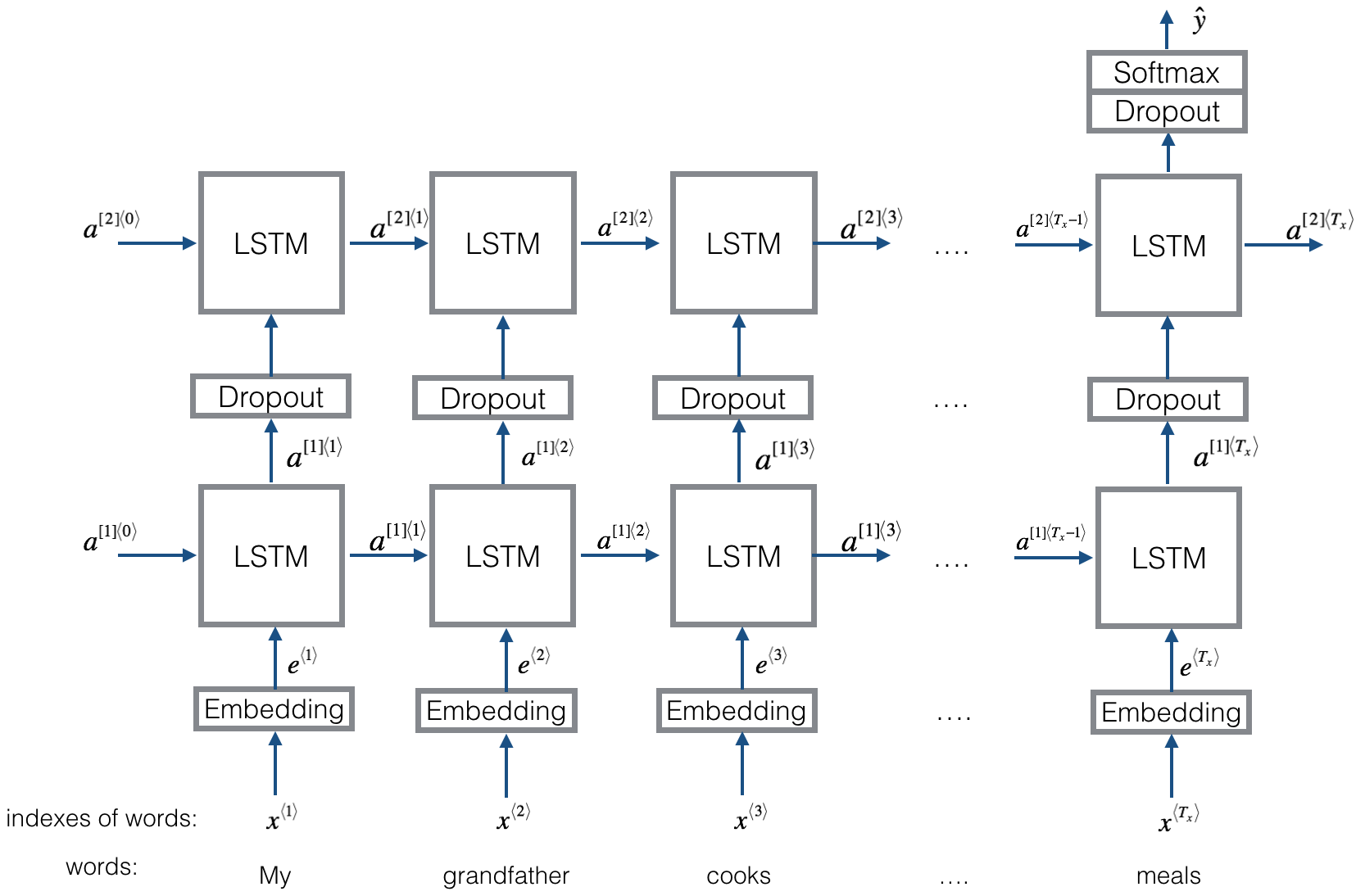We will use word vector representations to build an Emojifier that classifies the sentiment of a sentence to one of a given number of classes and pick an emoji accordingly. 🤩 💫 🔥
An emojifier will make your text messages more expressive. Rather than writing:
Congratulations on the promotion! Let's get coffee and talk. Love you!
An emojifier can automatically turn this into:
Congratulations on the promotion! 👍 Let's get coffee and talk. ☕️ Love you! ❤️
We implement a model that inputs a sentence (such as "Let's go see the baseball game tonight!") and finds the most appropriate emoji to be used with this sentence (⚾️).
I did this project in the Sequence Models course as part of the Deep Learning Specialization.
We have a small training dataset (X, Y) where:
- X contains 127 sentences (strings).
- Y contains an integer label between 0 and 4 corresponding to an emoji for each sentence.
The test dataset contains 56 examples. Some examples of sentences and their labels (emojis) are shown below.
Therefore, this is a classification problem with 5 classes.
We build two different models. With each model, we use the pre-trained 50-dimensional GloVe as word embeddings.
The baseline model simply averages the embeddings of the words in the input sentence, forward propagagetes the averge through a softmax layer.
In particular, this model does not consider the word ordering.
The second model use LSTM to take word ordering into account.
Some results from the baseline model are:
i adore you ❤️
i love you ❤️
funny lol 😄
lets play with a ball ⚾
food is ready 🍴
not feeling happy 😄
The baseline model ignores word ordering and as a result don't do well on a phrase like:
not feeling happy
The LSTM model gets this example right, but does not do well on some other examples:
Expected emoji:😄 prediction: he got a very nice raise ❤️
Expected emoji:😄 prediction: she got me a nice present ❤️
Expected emoji:😞 prediction: This girl is messing with me ❤️
Expected emoji:🍴 prediction: any suggestions for dinner 😄
Expected emoji:😄 prediction: you brighten my day ❤️
Expected emoji:😞 prediction: she is a bully ❤️
Expected emoji:😄 prediction: she said yes 😞
Expected emoji:🍴 prediction: I did not have breakfast 😞
This is because the training set is small. If the training set were larger, the LSTM model would be much better than the baseline model at understanding more complex sentences.


